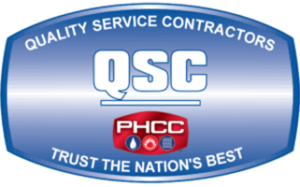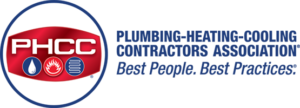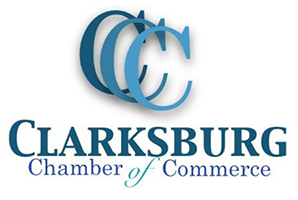Local regulations play a crucial role in shaping plumbing innovations by ensuring safety, environmental sustainability, and compliance. In areas like Clarksburg, Gaithersburg, and Bethesda, MD, these rules can encourage or delay new technologies like water-saving fixtures and smart systems. Regulations set standards for safety and efficiency, pushing manufacturers to innovate while ensuring new products are safe and reliable. Understanding these regulations is key to adopting plumbing technologies that enhance home efficiency and sustainability.

When you think about your home’s plumbing system, it’s easy to take it for granted. Yet, behind every faucet and pipe, there are incredible plumbing innovations that make our lives easier and our homes more efficient.
But did you know that local regulations in places like Clarksburg, Gaithersburg, and Bethesda, MD, play a significant role in shaping these advancements? These rules can either encourage the development of cutting-edge technology or slow it down. Let’s explore how these regulations impact plumbing innovations in your home.
What Are Plumbing Innovations?
Plumbing innovations are all about making our water systems smarter, more efficient, and better for the environment. These are the new ideas and technologies that transform how we use water in our homes, from the pipes that carry it to the faucets that deliver it.
For starters, they can help us save water and energy, which is great for both the planet and our wallets. Imagine installing a shower head that uses less water but still gives you a full, satisfying shower experience. Or think about smart systems that can detect leaks early, preventing costly damage to your home.
These innovations also ensure that our plumbing systems meet modern safety standards, keeping our water clean and our homes safe. By using advanced materials and technology, plumbing innovations can make our daily lives more convenient while also protecting the environment.
Understanding Local Regulations
While plumbing innovations can greatly improve our lives, they don’t exist in a vacuum. Local regulations play a crucial role in determining what can and cannot be done when it comes to plumbing.
Local regulations are the rules set by local governments that dictate how plumbing systems must be designed, installed, and maintained. These regulations ensure that plumbing systems are safe, reliable, and efficient.
They cover everything from the types of materials that can be used in pipes to the methods for installing water heaters. For example, in places like Clarksburg, Gaithersburg, and Bethesda, MD, these rules are tailored to address the specific needs and challenges of the area, such as climate and water supply concerns.
How Local Regulations Influence Plumbing Innovations
Local regulations don’t just set the rules for how plumbing systems are built; they also have a big impact on how new plumbing technologies are developed and implemented. Let’s explore how these regulations influence plumbing innovations, shaping the way we approach safety, environmental concerns, and the adoption of new technology.
The Role of Safety Standards
Safety is always a top priority when it comes to plumbing, and local regulations ensure that all innovations meet strict safety standards. These standards dictate how new products and technologies are tested before they can be used in homes.
For example, if a new type of pipe material is introduced, it must pass rigorous safety tests to ensure it won’t contaminate drinking water or cause leaks. This process can sometimes slow down the adoption of new innovations, but it’s crucial for protecting homeowners.
Environmental Considerations and Their Impact
Environmental concerns are becoming increasingly important in the world of plumbing. Regulations often include requirements that promote water conservation and energy efficiency.
For example, in areas like Bethesda and Gaithersburg, MD, there may be rules encouraging the use of low-flow fixtures that help reduce water waste. These regulations can drive innovation by pushing companies to develop new products that meet these eco-friendly standards.
Building Codes and Plumbing Technology
Building codes are another set of rules that influence plumbing innovations. These codes specify how plumbing systems should be designed and installed in new buildings or renovations.
Innovations like smart plumbing systems, which can monitor and control water usage remotely, must comply with these codes to be widely adopted.
Sometimes, building codes need to be updated to accommodate new technologies, creating a dynamic relationship between regulation and innovation.
Examples of Plumbing Innovations Affected by Regulations
Local regulations don’t just influence how plumbing systems are installed; they also shape the development and adoption of specific plumbing innovations. Here are some key examples of how these rules impact the latest advancements in plumbing technology.
Water-Saving Fixtures
Water-saving fixtures, like low-flow showerheads and toilets, are great examples of innovations driven by environmental regulations. In many areas, including Clarksburg, Gaithersburg, and Bethesda, MD, regulations mandate the use of these fixtures in new constructions and renovations.
These rules are designed to conserve water, especially in regions where water scarcity is a concern. As a result, manufacturers are constantly innovating to create fixtures that meet these regulations while still providing excellent performance.
Advanced Pipe Materials
The materials used in plumbing pipes have evolved significantly, thanks in part to local regulations. Here’s how these plumbing innovations have transformed the industry:
- Replacement of Traditional Materials: Older materials like lead and galvanized steel, which were commonly used in the past, have been largely replaced due to health and safety concerns. Lead pipes, for example, posed serious risks of water contamination, prompting a shift to safer alternatives.
- Safer and More Durable Options: Newer materials such as PEX (cross-linked polyethylene) and CPVC (chlorinated polyvinyl chloride) have become the industry standard. These materials are not only safer for water quality but also more durable, reducing the likelihood of leaks and other common issues associated with older piping materials.
- Ease of Installation: PEX and CPVC are also much easier to install compared to traditional materials. Their flexibility and lightweight nature make them ideal for both new installations and retrofits, cutting down on labor costs and installation time. Additionally, these materials are less prone to corrosion and scaling, ensuring a longer lifespan for your plumbing system.
- Driven by Local Building Codes: Local building codes often require the use of these advanced materials to ensure safety and efficiency. This regulatory push has been a significant factor in driving the innovation and widespread adoption of these materials in modern plumbing systems.
These advancements are not just about improving efficiency; they’re about ensuring that your home’s plumbing is safer, more reliable, and better equipped to meet the demands of the future.
By choosing materials that adhere to the latest standards, you’re investing in a plumbing system that will stand the test of time.
Smart Plumbing Systems
Smart plumbing systems, which use technology to monitor and manage water usage, are becoming increasingly popular. However, their adoption is heavily influenced by local regulations.
For instance, building codes may need to be updated to accommodate the installation of these systems in new or existing homes. In some cases, regulations may encourage the use of smart systems by offering incentives for homeowners who install them, such as rebates or tax credits.
This regulatory support helps drive innovation in smart plumbing technology, making it more accessible to the average homeowner.
Challenges Faced by Innovators Due to Regulations
While local regulations are essential for ensuring safety and environmental protection, they can also present challenges for those looking to innovate in the plumbing industry. Let’s take a look at some of the hurdles that innovators often face when trying to bring new plumbing technologies to market.
Navigating Complex Approval Processes
One of the biggest challenges for plumbing innovators is navigating the complex approval processes required by local regulations. Before a new product or technology can be used in homes, it must pass a series of tests and meet specific standards set by local authorities.
This process can be time-consuming and costly, potentially delaying the release of new innovations. For example, a company developing a new type of water-saving fixture might have to go through multiple rounds of testing to prove that it meets all safety and performance standards.
Balancing Innovation with Compliance
Innovators must also find a balance between pushing the boundaries of what’s possible and staying within the limits of current regulations. This can be especially challenging when regulations are slow to catch up with technological advancements.
For instance, a new smart plumbing system might offer incredible benefits in terms of water management, but if local building codes haven’t been updated to include guidelines for its installation, the system could face significant barriers to adoption.
Innovators often have to work closely with regulators to ensure their products comply with existing rules while also advocating for updates that reflect the latest technological advancements.
The Positive Side: How Regulations Can Drive Innovation
While it might seem like regulations are just hurdles to overcome, they can actually play a positive role in driving innovation within the plumbing industry. Let’s explore how these rules can encourage the development of better, safer, and more sustainable plumbing technologies.
Encouraging Sustainable Practices
One of the most significant ways regulations drive innovation is by promoting sustainable practices. For example, local regulations in areas like Gaithersburg and Bethesda, MD, often require the use of water-efficient fixtures and environmentally friendly materials.
This pushes companies to develop new products that meet or exceed these standards, leading to innovations that help conserve water and reduce energy use.
By setting these high standards, regulations can inspire the creation of technologies that are not only better for the environment but also more efficient and cost-effective for homeowners.
Promoting Safer Plumbing Systems
Regulations also play a critical role in ensuring that plumbing systems are safe for everyone. By setting strict safety standards, local regulations force innovators to prioritize safety in their designs.
This has led to the development of advanced materials that are less likely to corrode or leach harmful substances into the water supply.
For example, the push to eliminate lead pipes due to safety concerns has driven the development of safer alternatives like PEX and CPVC. In this way, regulations help ensure that new plumbing technologies protect the health and safety of everyone who uses them.
Benefits of 3D Printing for Homeowners
3D printing is making waves in many industries, and plumbing is no exception. This innovative technology is starting to change how plumbing components are created and installed, offering several benefits for homeowners. Let’s dive into how 3D printing can make a difference in your home’s plumbing system.
- Reduced Repair Times: 3D printing allows for the quick production of parts on demand. If a unique or hard-to-find plumbing part breaks, it can be created immediately, reducing repair times and getting your plumbing system back up and running faster.
- Cost Savings: By eliminating the need for expensive molds and mass production, 3D printing makes it more affordable to produce custom or small-batch parts. This can lead to lower costs for homeowners, especially when dealing with specialized or custom plumbing components that might otherwise be costly to source or manufacture.
- Long-Term Durability: 3D-printed parts can be customized to meet specific needs and made with advanced materials. These materials offer increased durability, meaning the parts are designed to withstand wear and tear over time. This results in fewer repairs and replacements, saving homeowners both money and the hassle of dealing with frequent plumbing issues.
- Customization and Precision: 3D printing allows for high levels of customization, enabling the creation of plumbing parts that fit perfectly into unique spaces or meet specific requirements. This precision can lead to more efficient plumbing systems that are tailored to the needs of your home.
With these benefits, it’s clear that 3D printing is set to revolutionize the way we think about plumbing in the future, offering greater efficiency, cost savings, and durability for homeowners.
The Future of 3D Printing in Plumbing
The potential of 3D printing in the plumbing industry is just beginning to be realized. As technology continues to advance, we can expect even more exciting developments that will change the way we approach plumbing in our homes. Let’s take a look at what might be on the horizon for 3D printing in plumbing and how it could expand its applications in the near future.
Innovations on the Horizon
As 3D printing technology evolves, we’re likely to see the creation of even more sophisticated plumbing components.
This could include custom-designed fixtures that are perfectly tailored to fit unique spaces or needs, such as faucets or showerheads with intricate designs that were previously impossible to manufacture.
Additionally, the use of advanced materials, like those that are more resistant to corrosion or that have antimicrobial properties, could lead to plumbing systems that are not only more durable but also healthier for homes.
Expanding Applications
While 3D printing is currently used primarily for creating individual parts, its applications in plumbing are expected to expand significantly. In the future, entire plumbing systems or large sections of piping could be printed in one piece, reducing the need for joints and connections that are prone to leaks.
This would make installations quicker, more efficient, and potentially less expensive. Furthermore, as the technology becomes more accessible, homeowners might even be able to print their own replacement parts, providing a new level of convenience and customization in home maintenance.
Ready to Embrace the Latest Plumbing Innovations?
Are you curious about how the latest plumbing innovations could improve your home in Clarksburg, Gaithersburg, or Bethesda, MD? At Clarksburg Plumbing, we stay ahead of the curve by integrating the most advanced and efficient plumbing solutions into your home.
Whether you’re interested in upgrading to water-saving fixtures, exploring smart plumbing systems, or ensuring your home meets the latest safety standards, our expert team is here to help.
Don’t let outdated plumbing hold you back—contact Clarksburg Plumbing today to discover how modern innovations can make a difference in your home!

FAQs About Plumbing Innovations
How Do Local Regulations Affect New Plumbing Technologies?
Local regulations play a significant role in determining how new plumbing innovations are developed and implemented. These rules ensure that all plumbing innovations meet safety and environmental standards, which can sometimes slow down the adoption of new technologies but ultimately protect homeowners and the environment.
What Are the Common Regulatory Challenges in Plumbing Innovations?
Innovators often face challenges such as navigating complex approval processes and balancing their plumbing innovations with existing regulations. These hurdles can delay the introduction of new products and require close collaboration with regulatory bodies to ensure compliance with the latest plumbing innovations.
Can Innovative Plumbing Solutions Improve Regulatory Compliance?
Yes, many innovative plumbing innovations are designed with regulatory compliance in mind. For example, water-saving fixtures and advanced materials often exceed local standards, helping homeowners not only comply with regulations but also enjoy the benefits of the latest plumbing innovations.
How Do Regulations Drive Innovation in Plumbing?
Regulations can actually drive plumbing innovations by setting high standards for safety and sustainability. This encourages companies to develop new products and plumbing innovations that meet or exceed these standards, leading to advancements that benefit
What Is the Future of 3D Printing in Plumbing?
The future of 3D printing in plumbing looks promising, with potential plumbing innovations such as custom-designed fixtures and entire plumbing systems printed in one piece. As the technology continues to evolve, it’s expected to bring even more convenience, efficiency, and durability to home plumbing systems.









